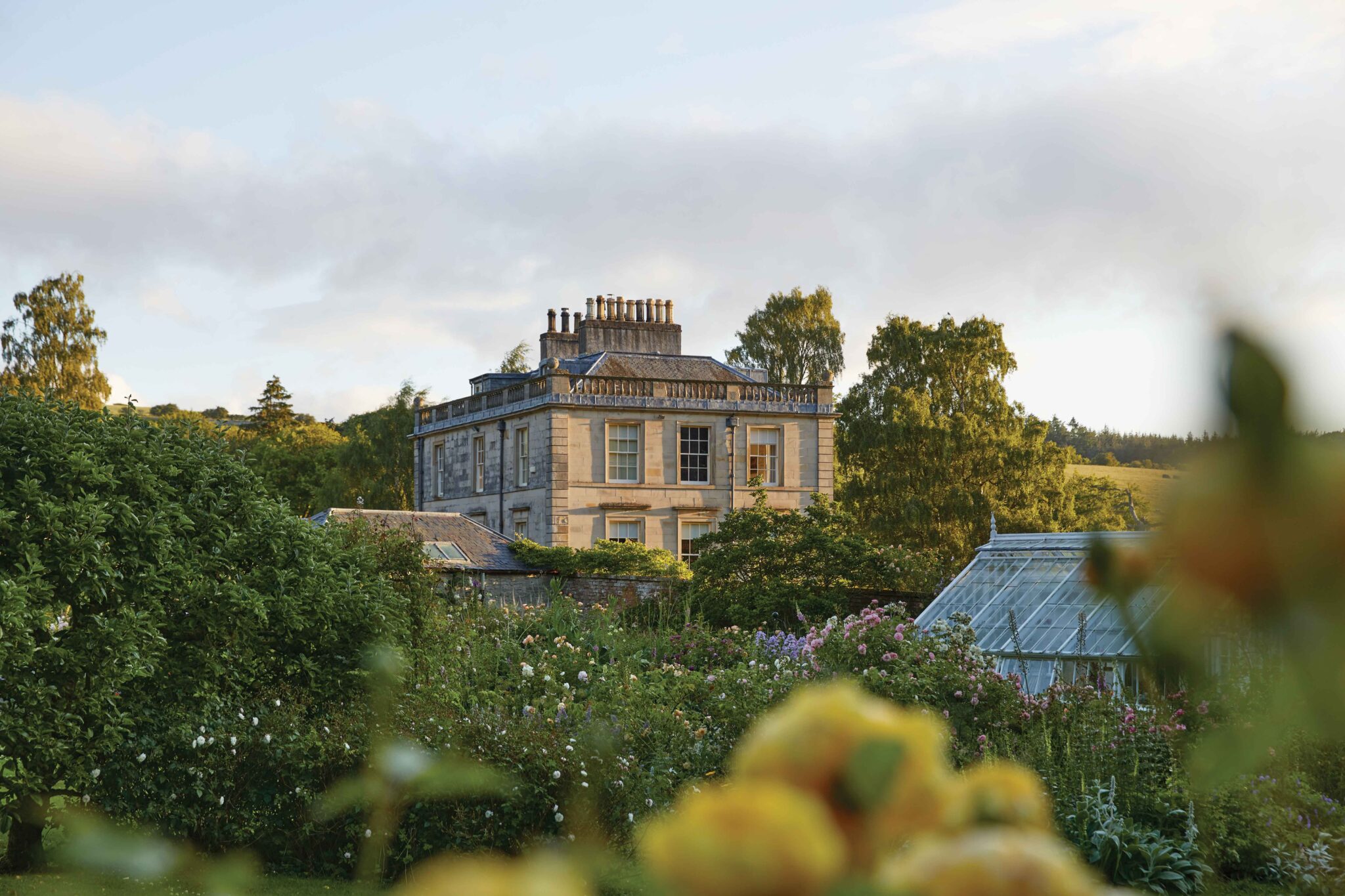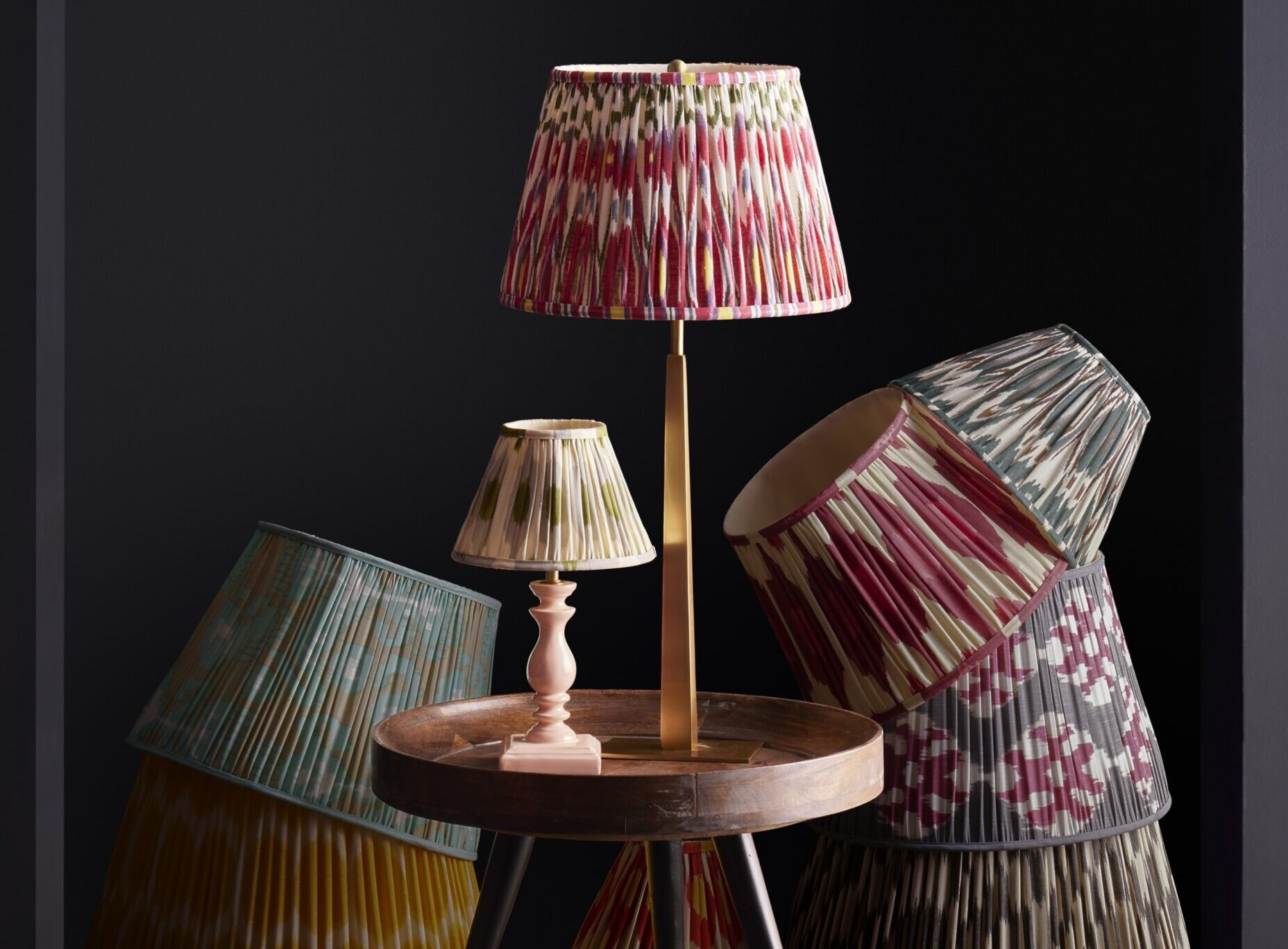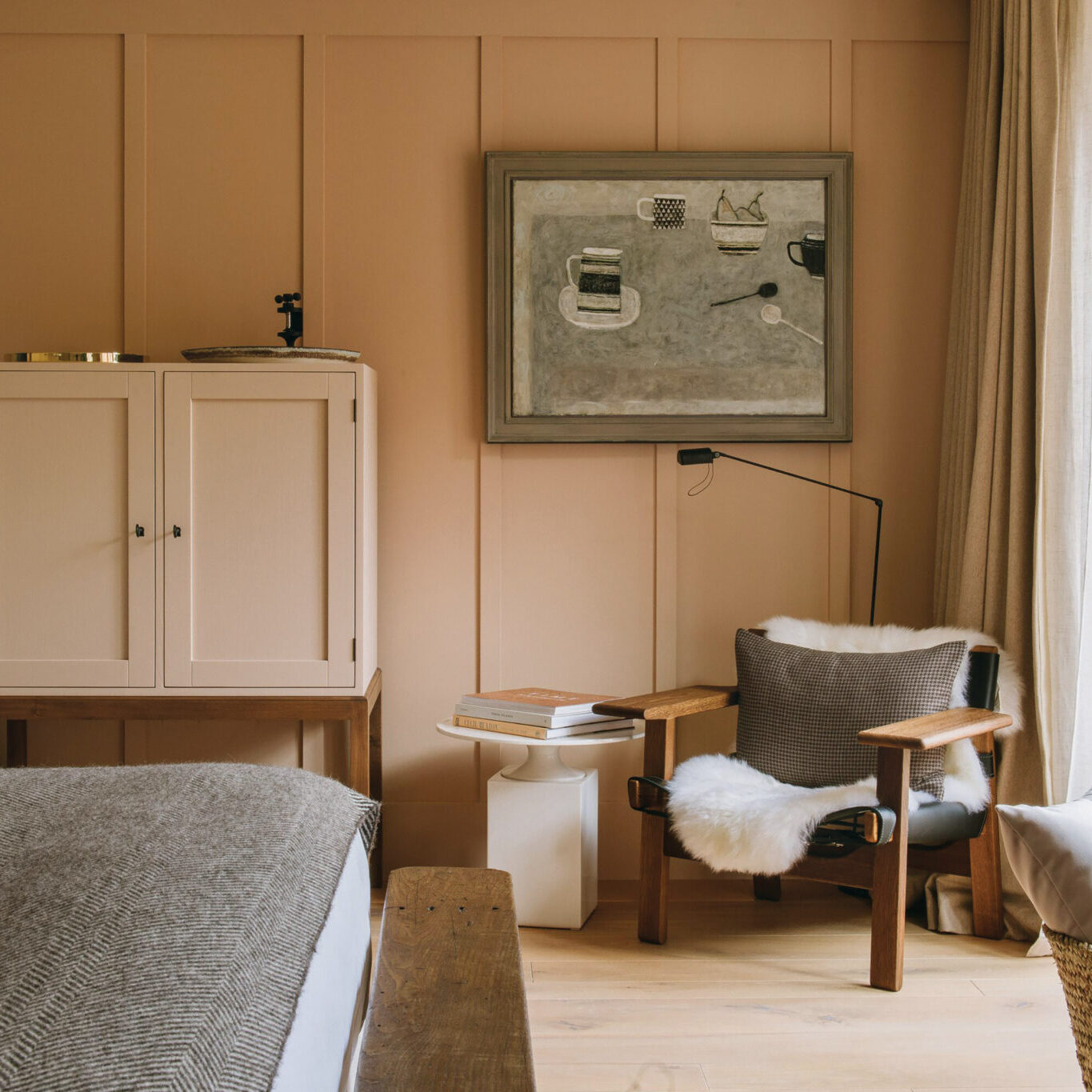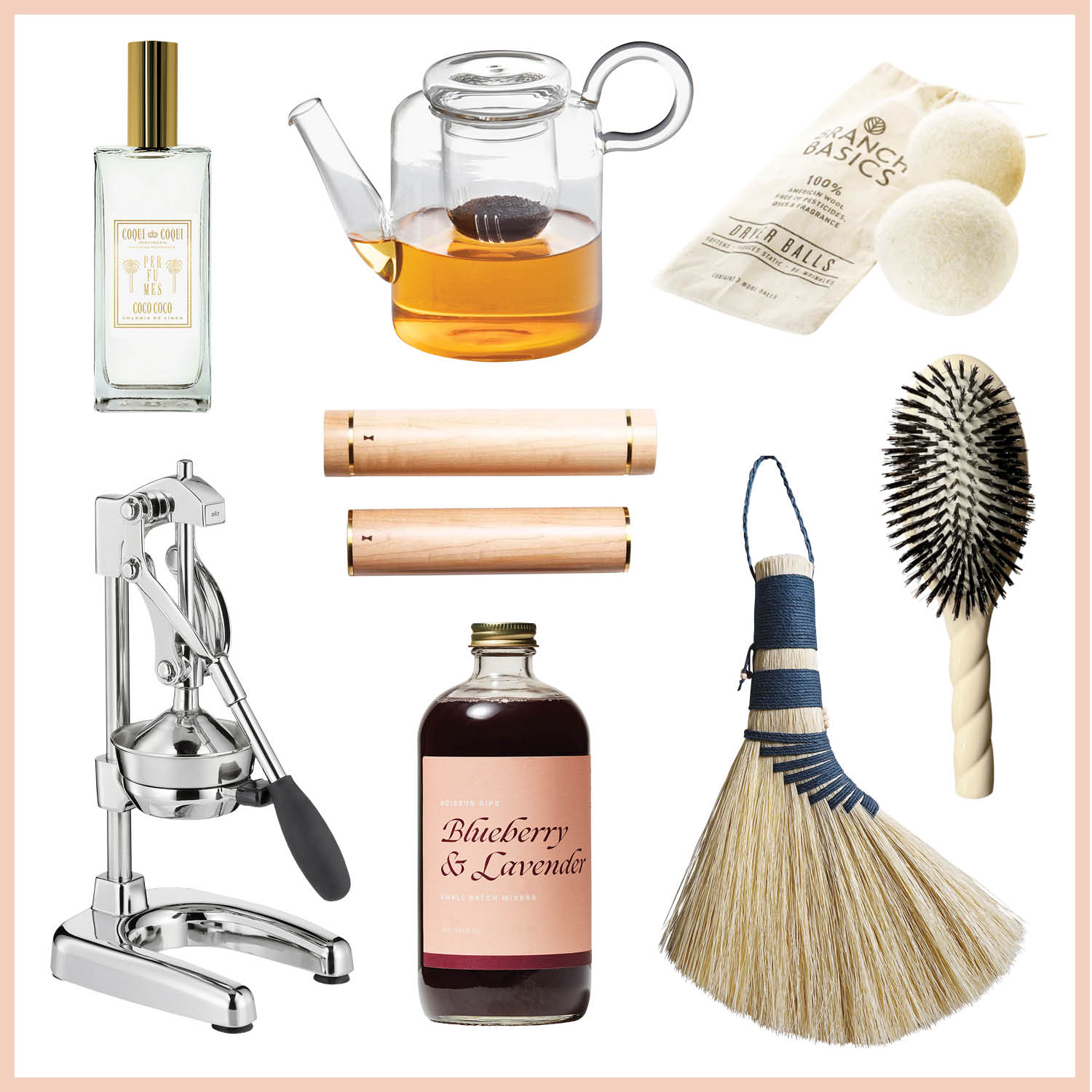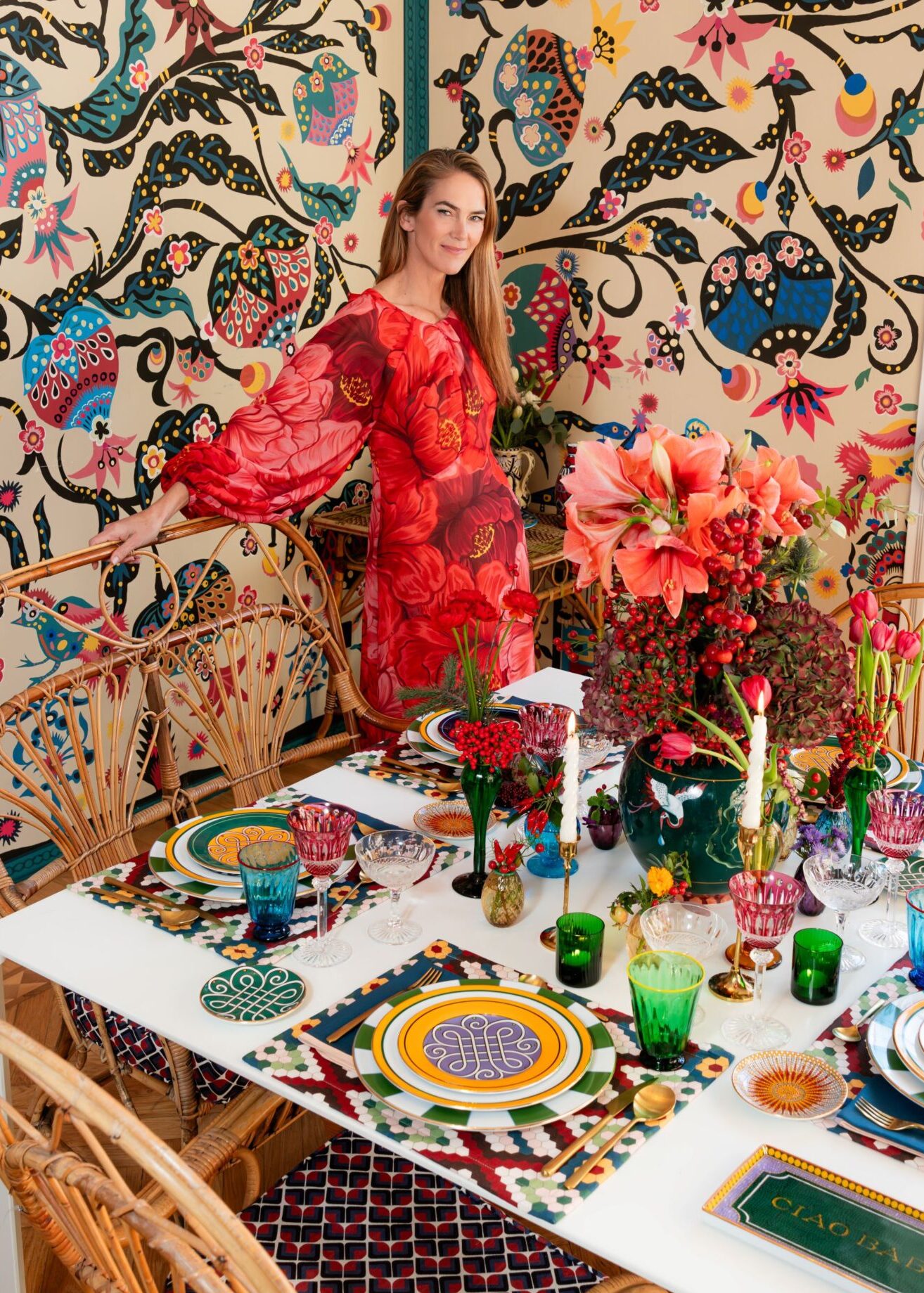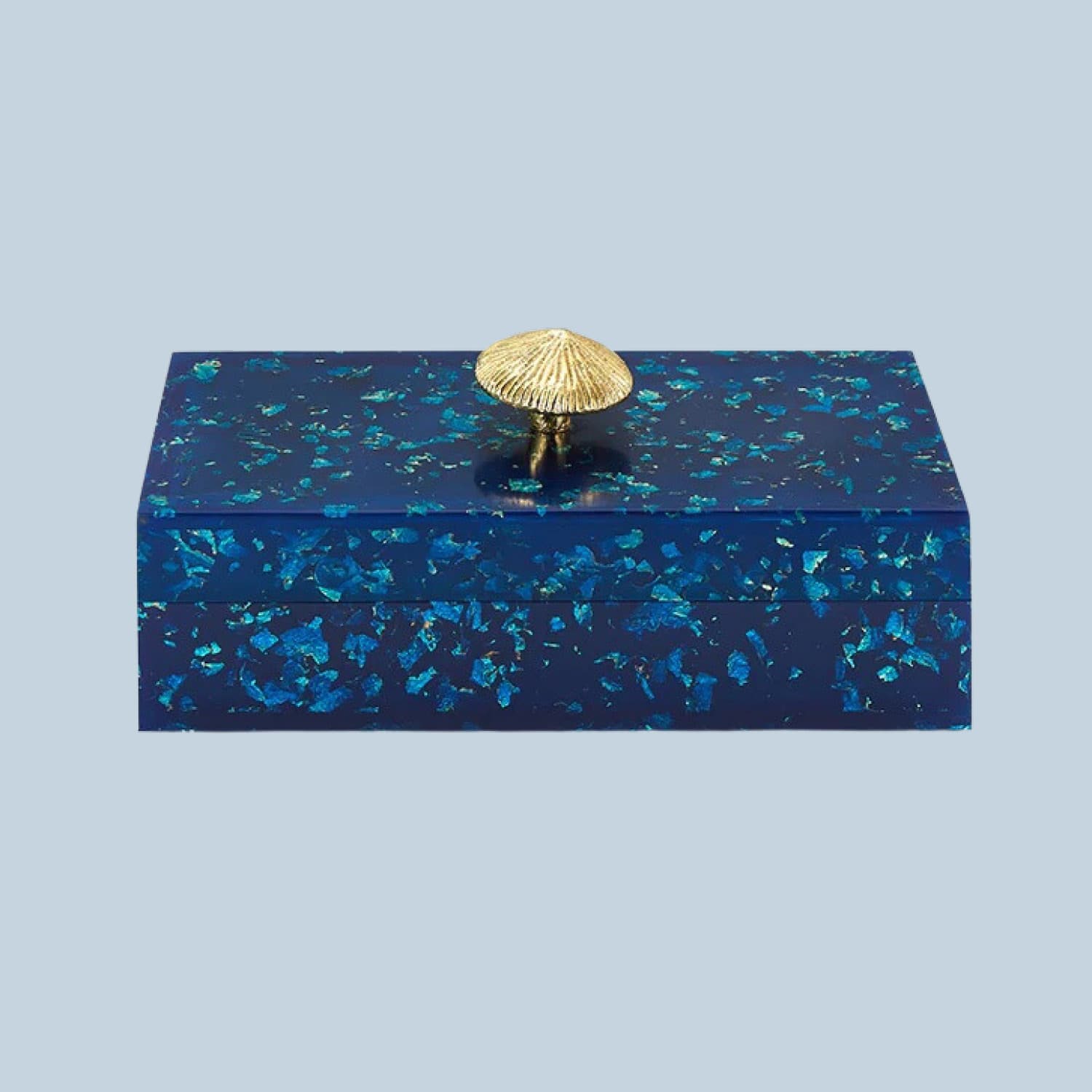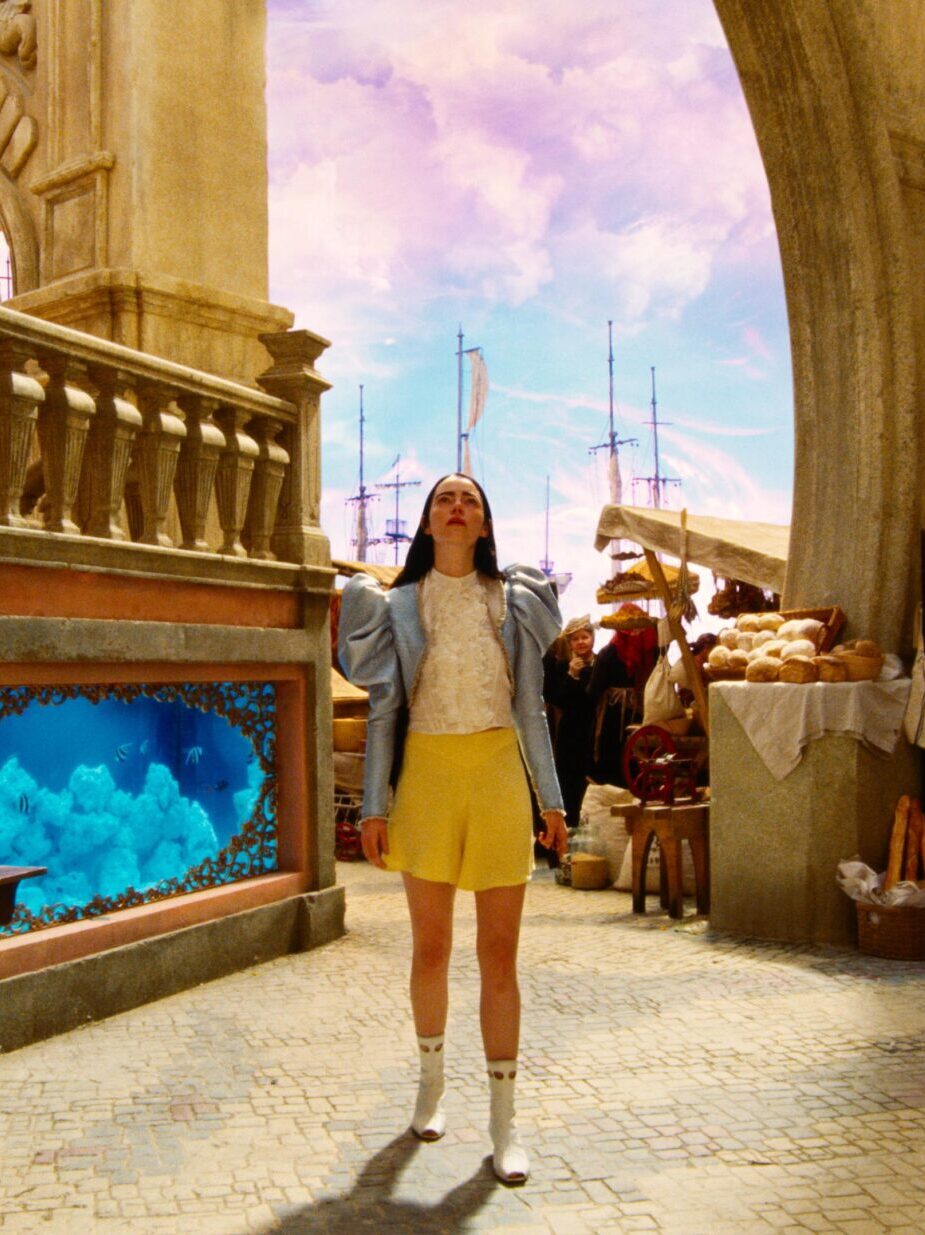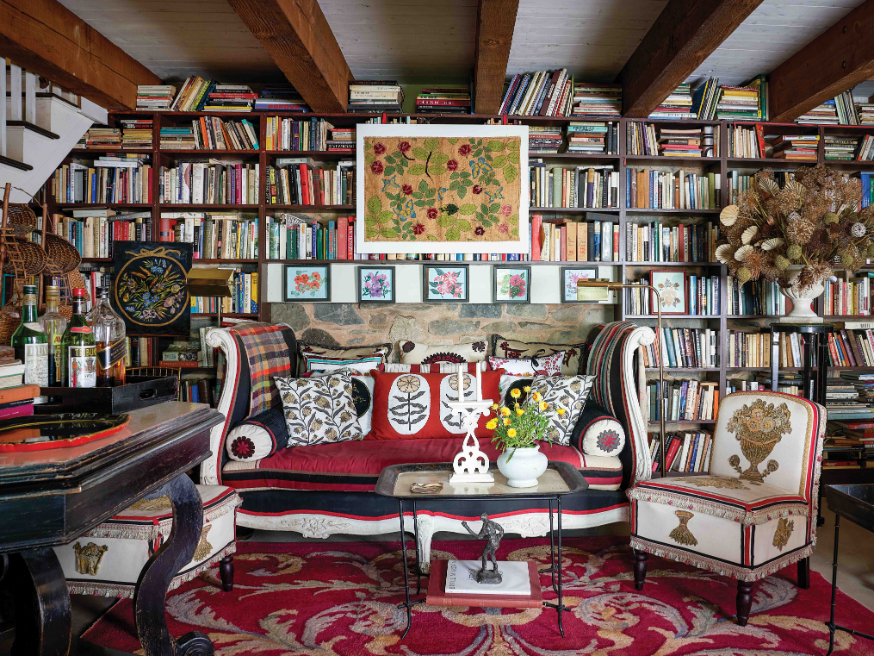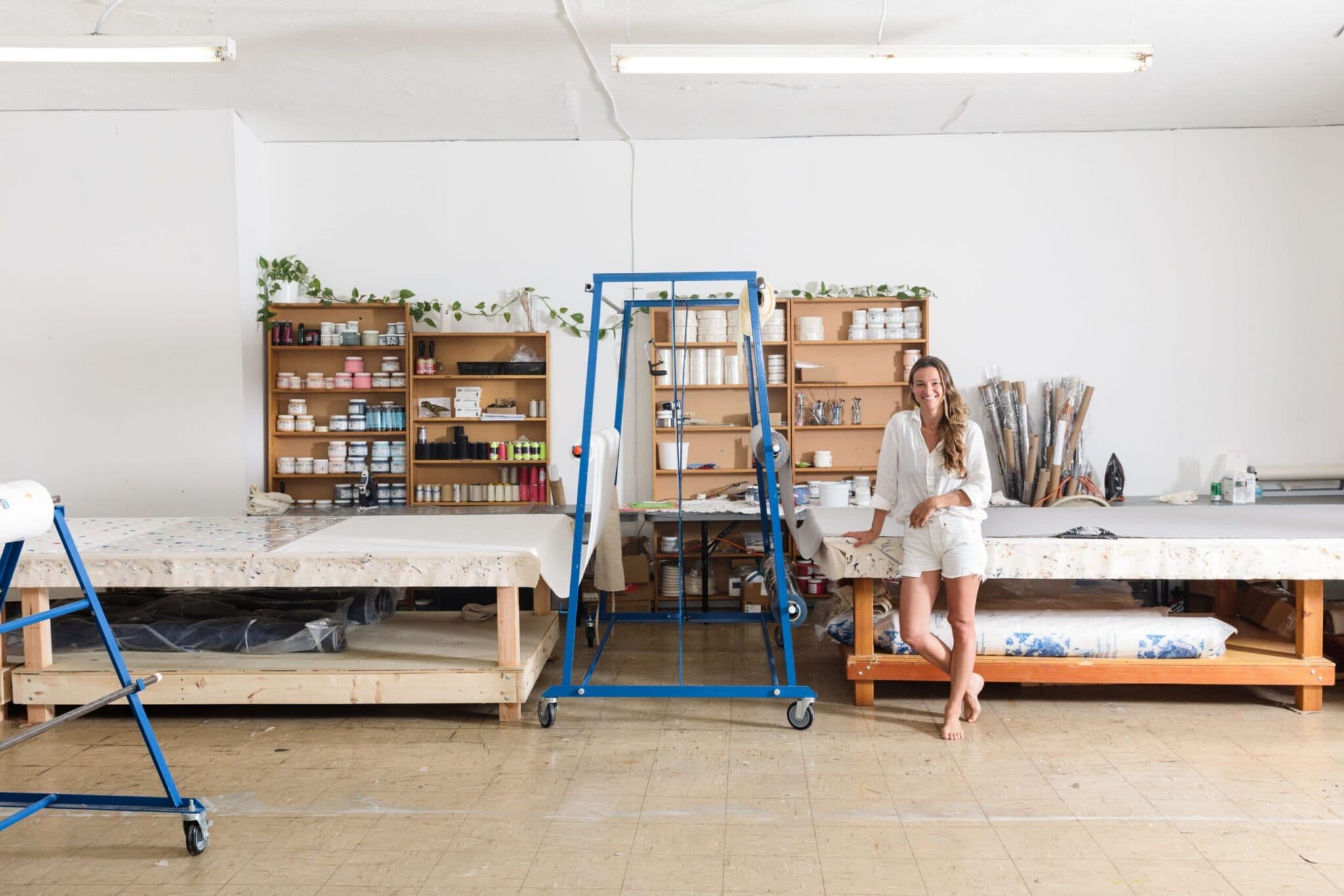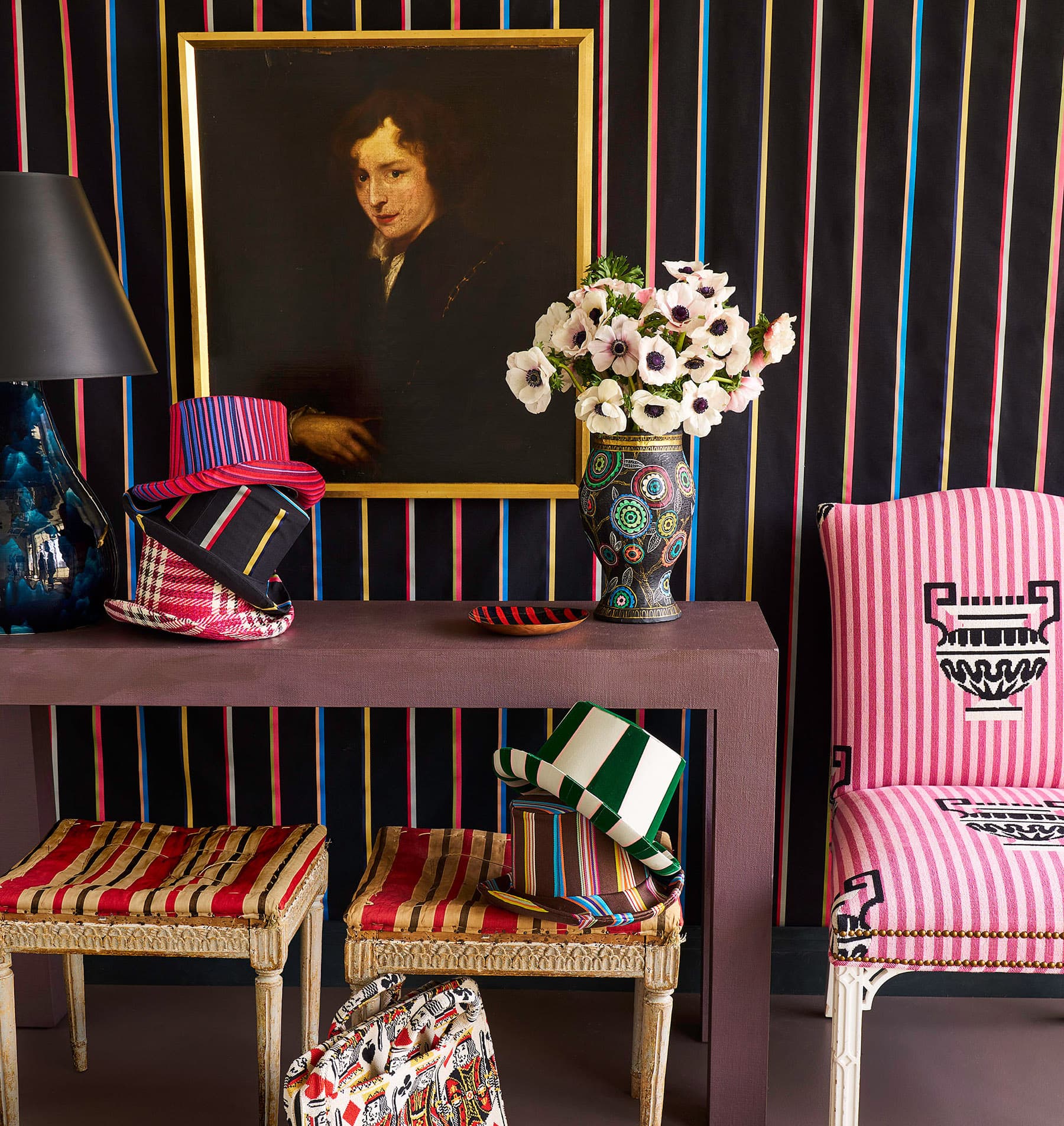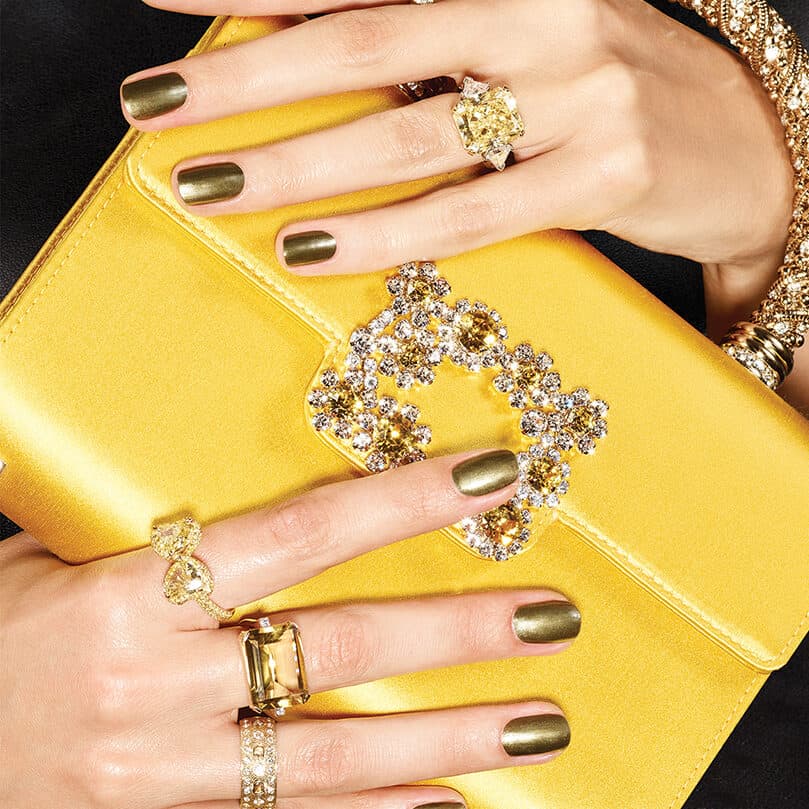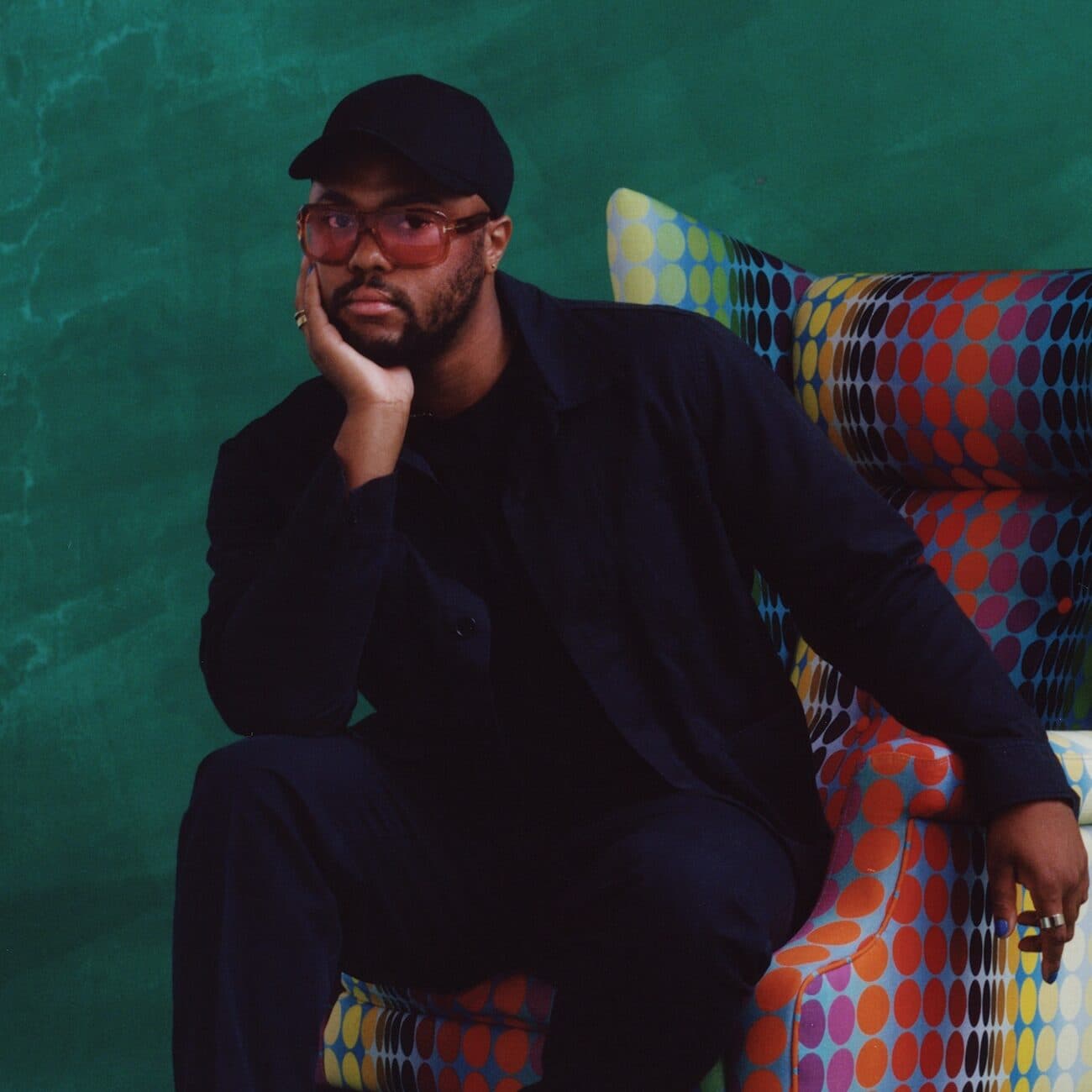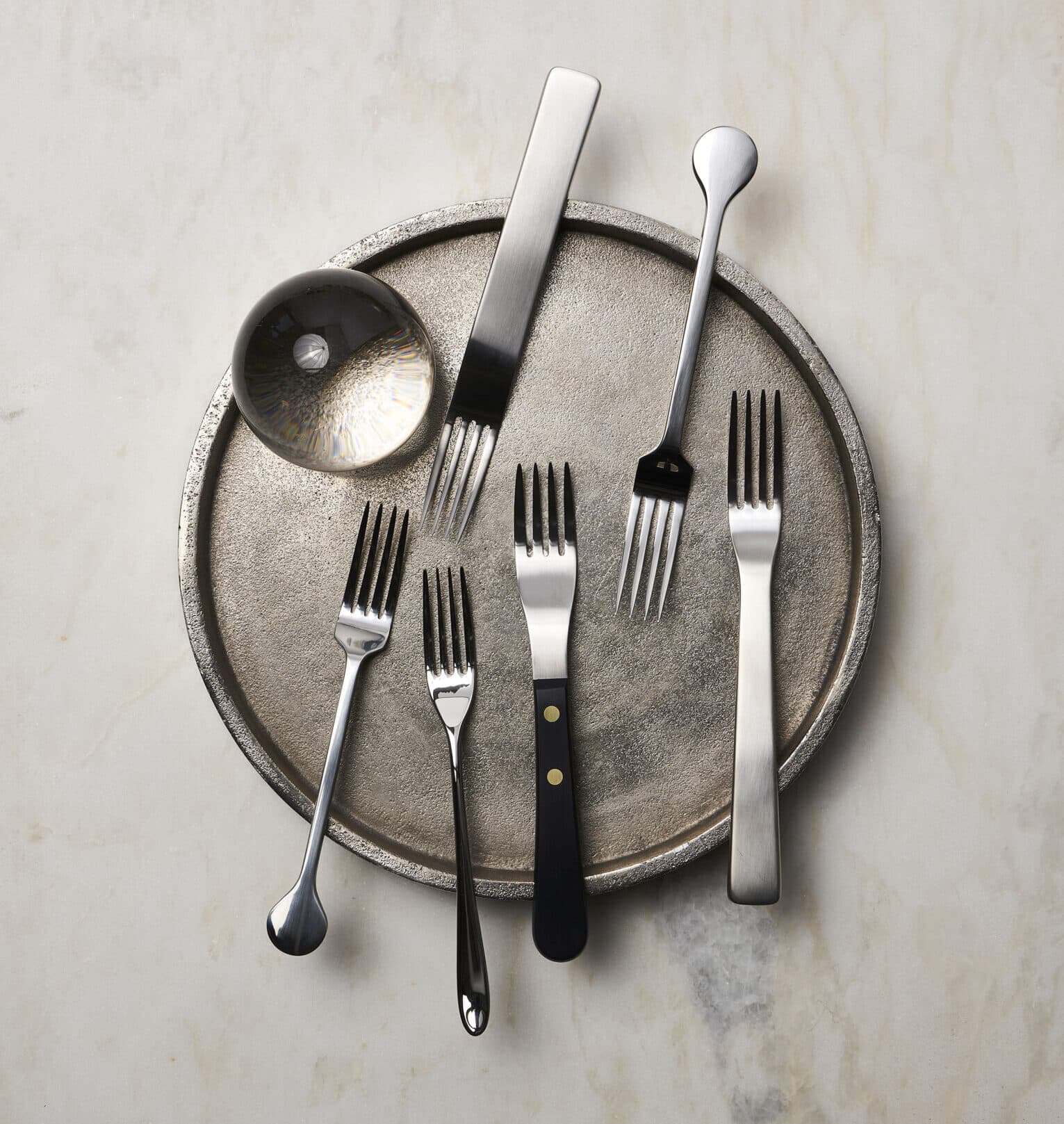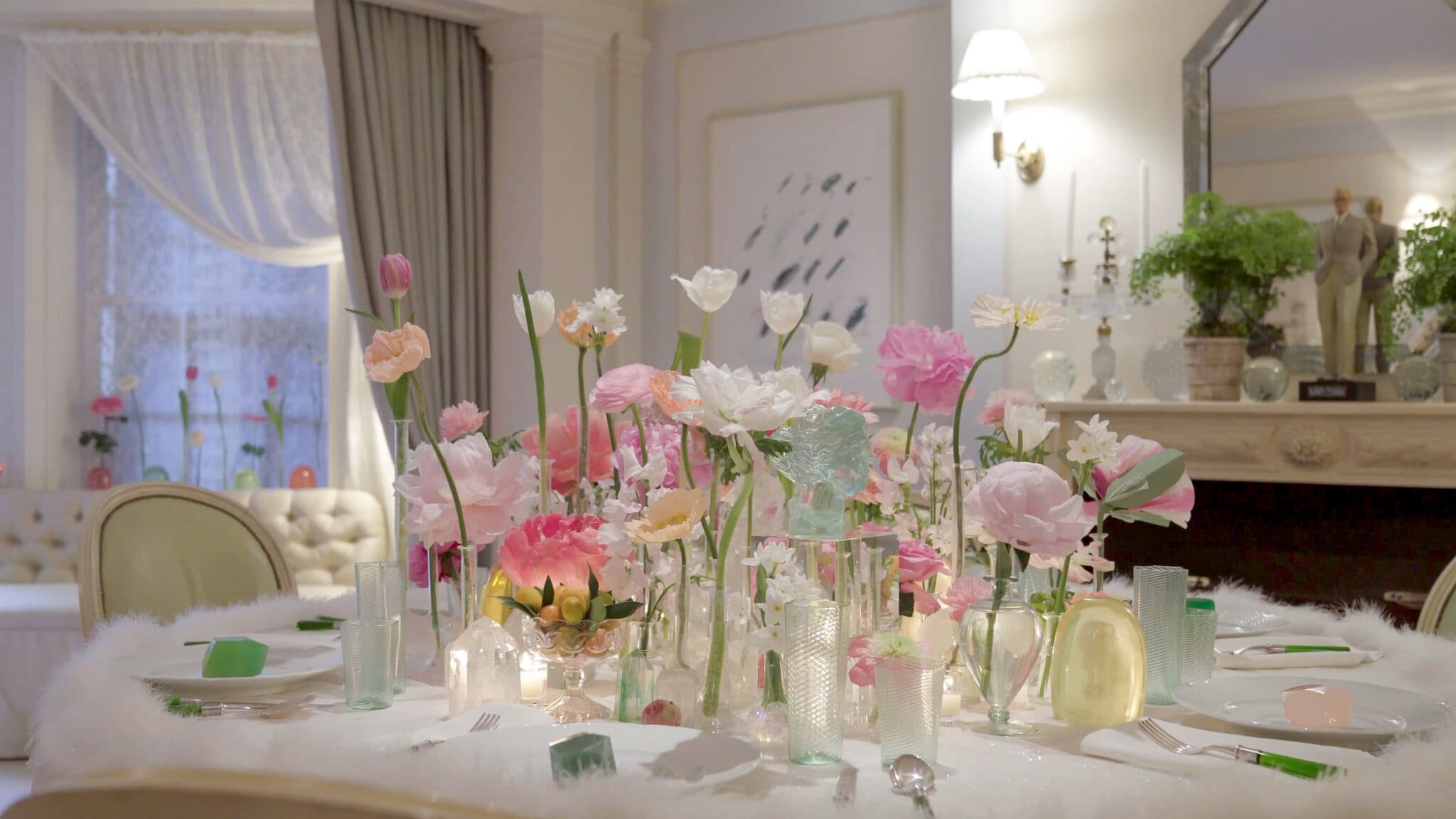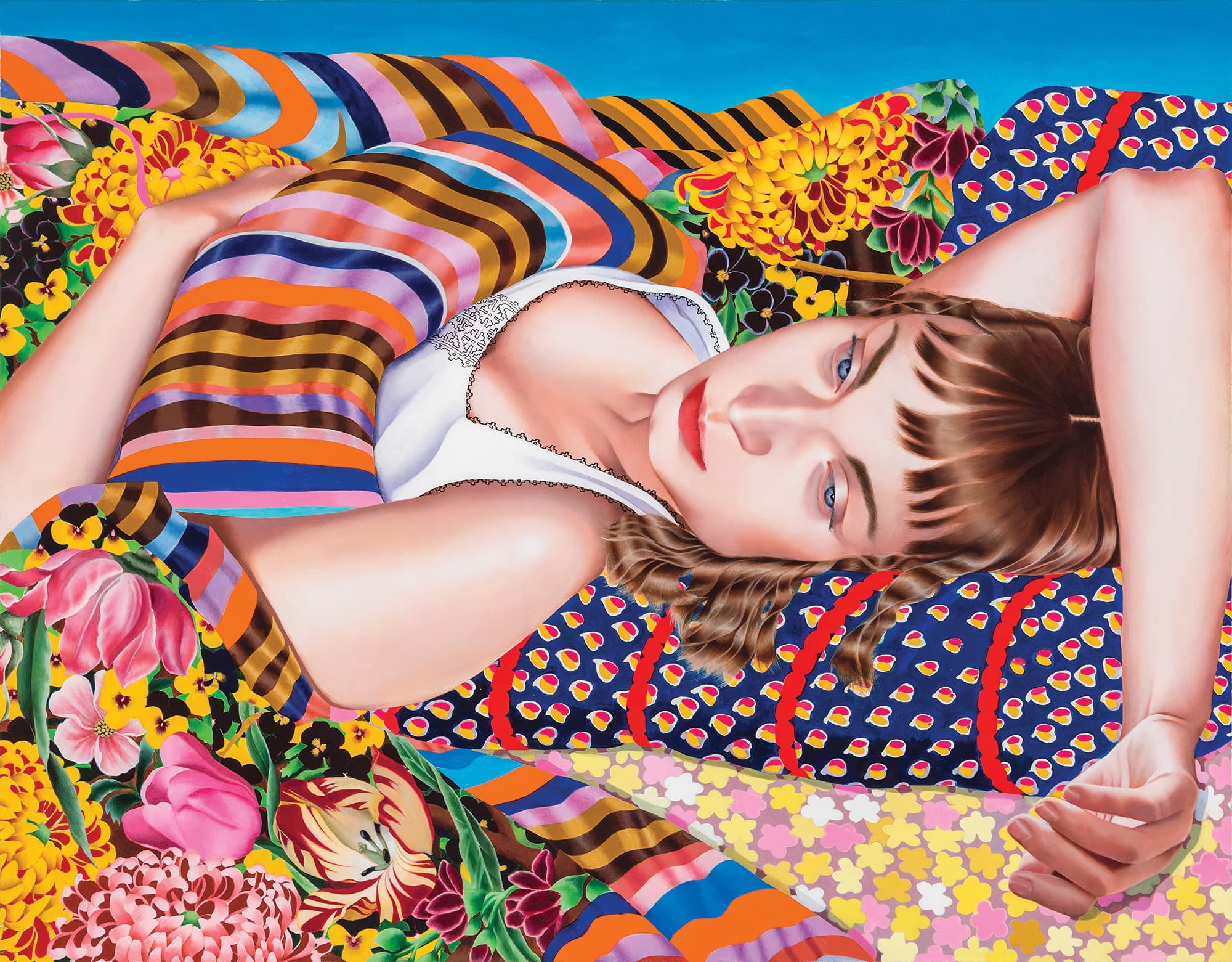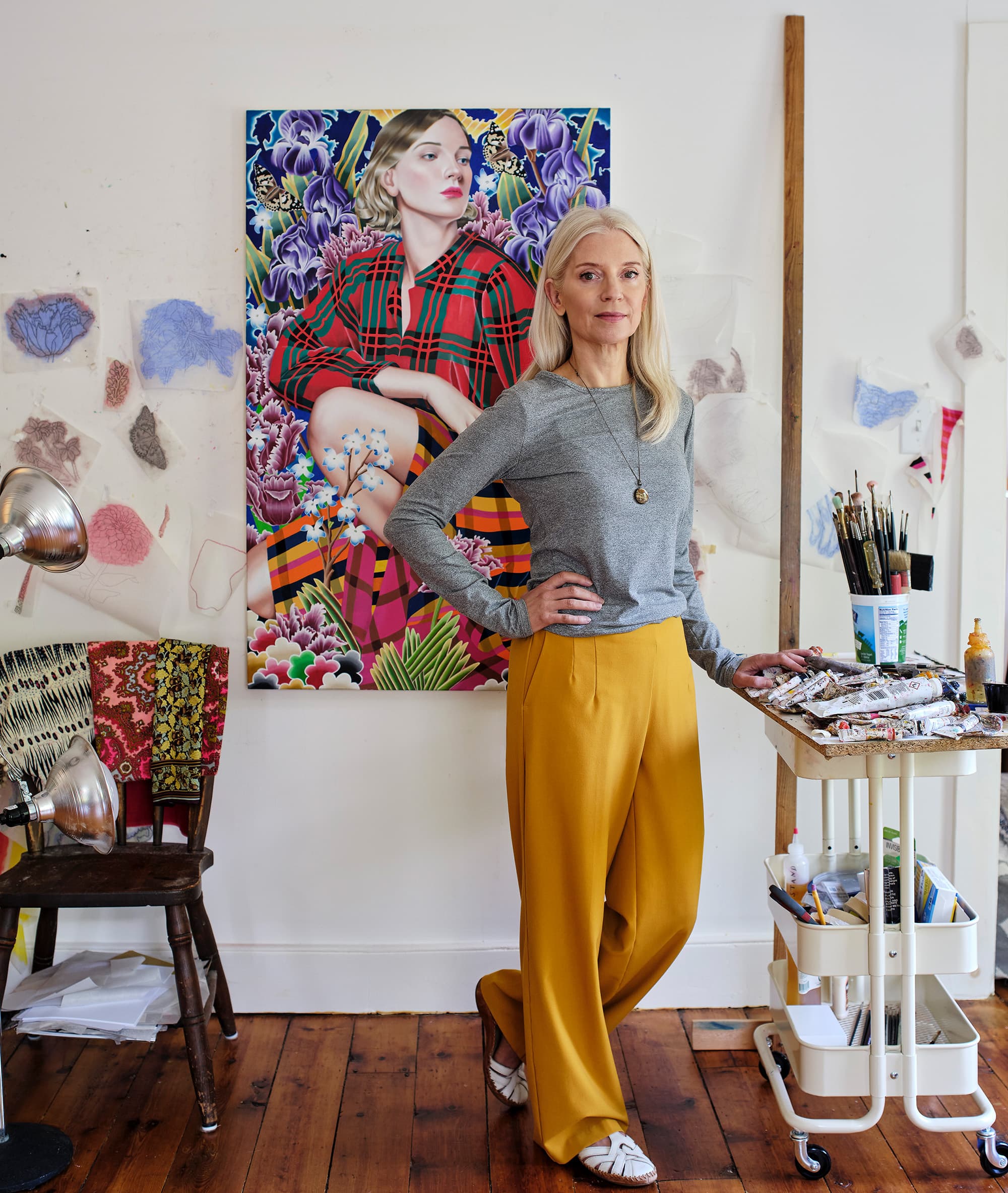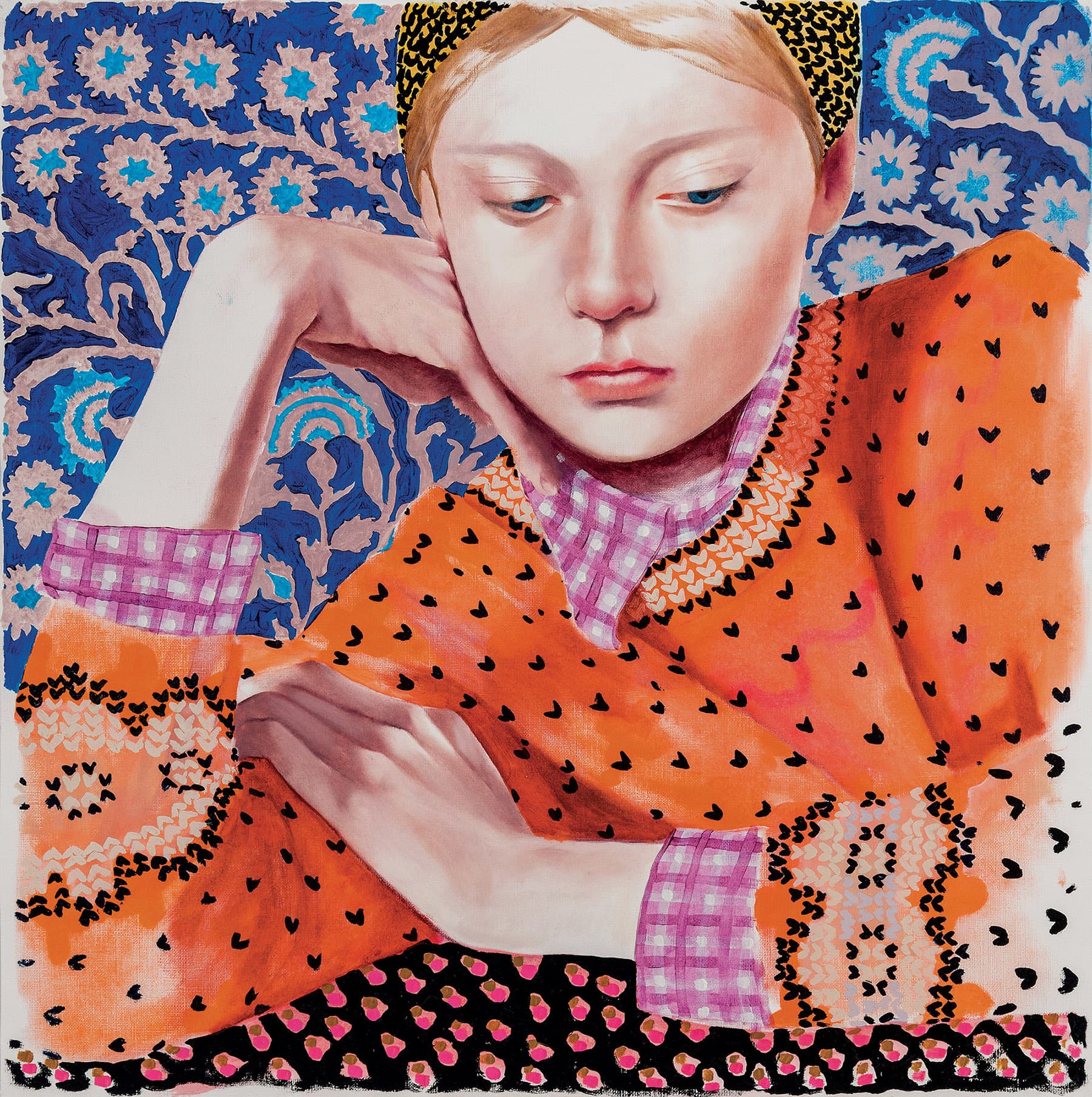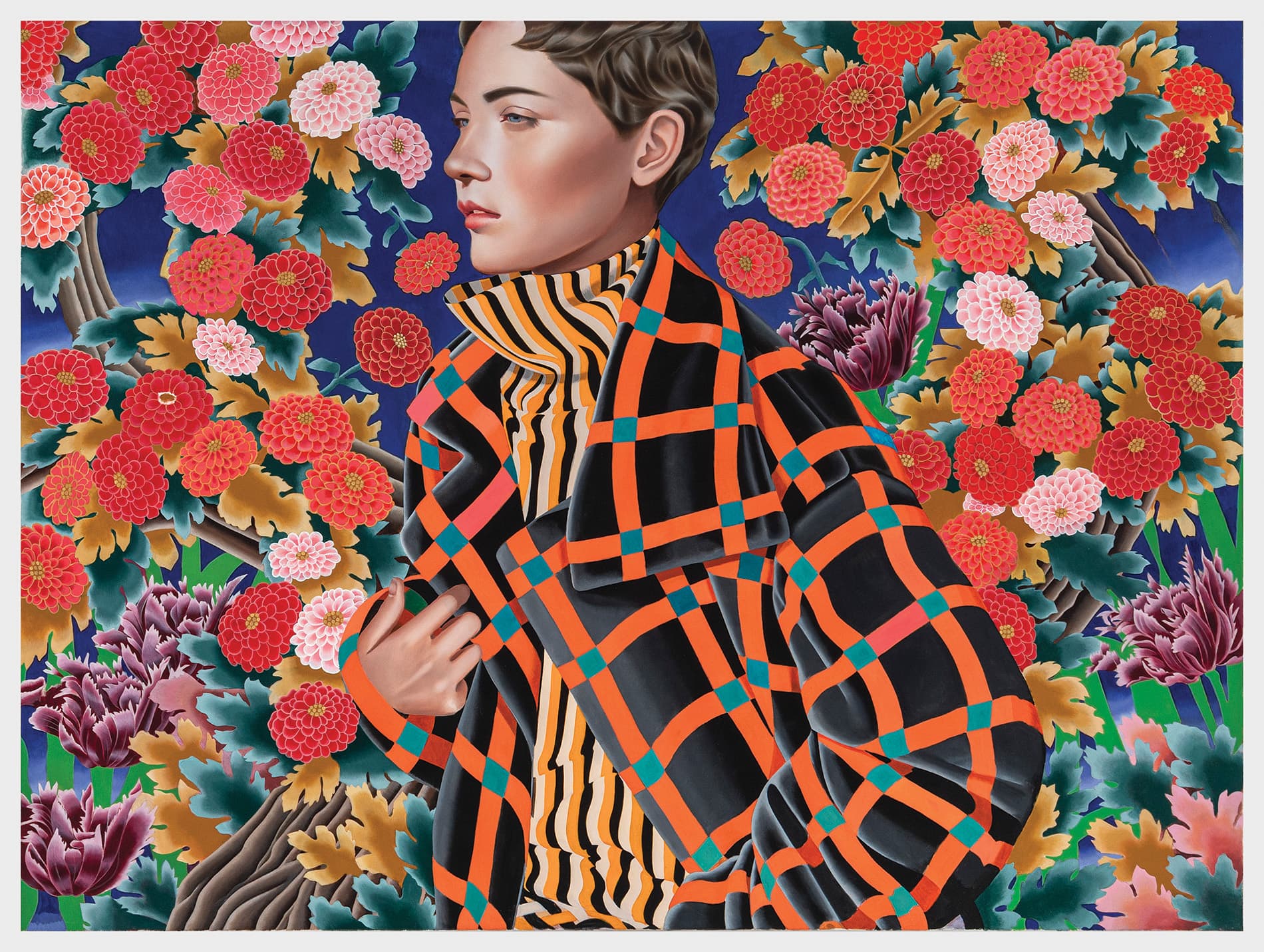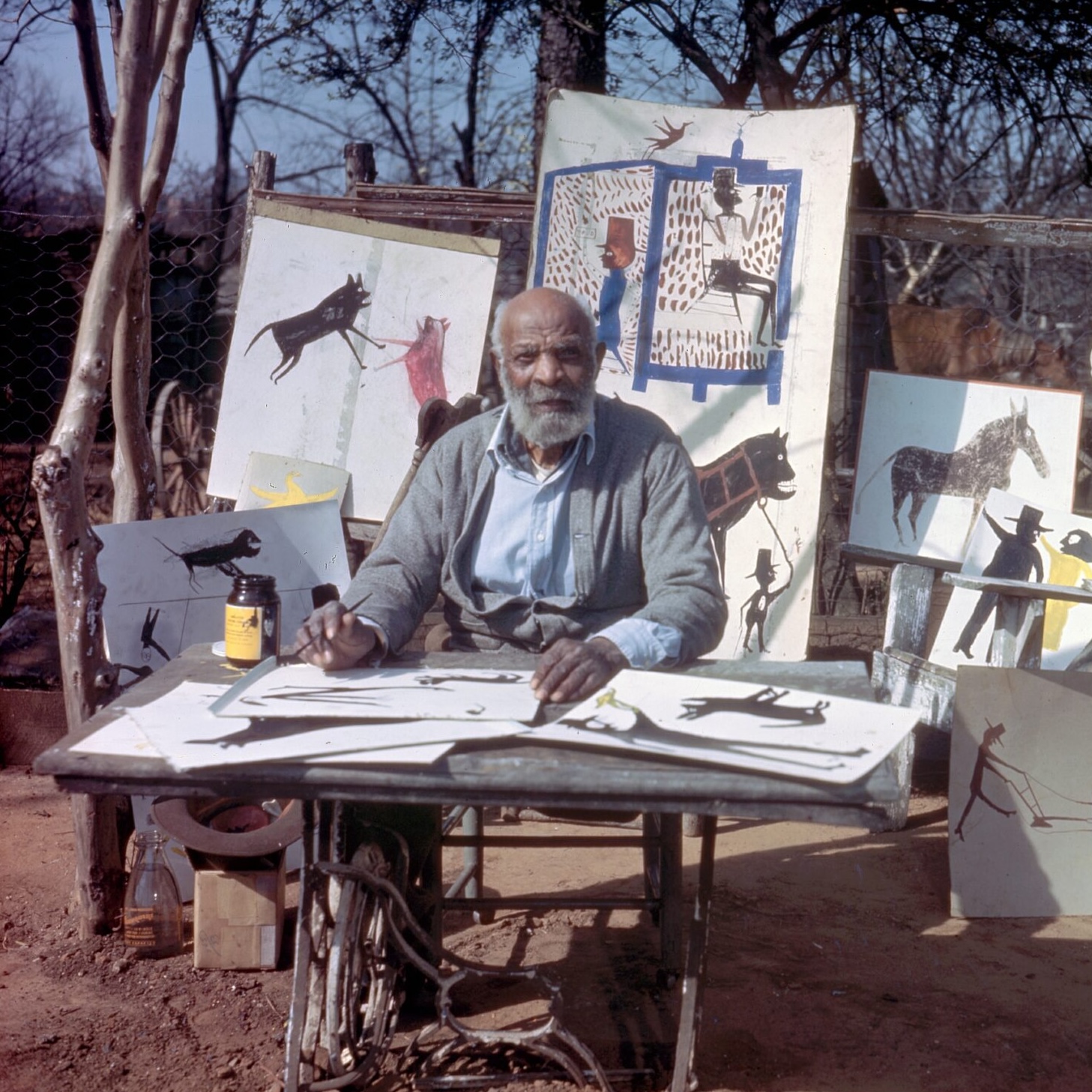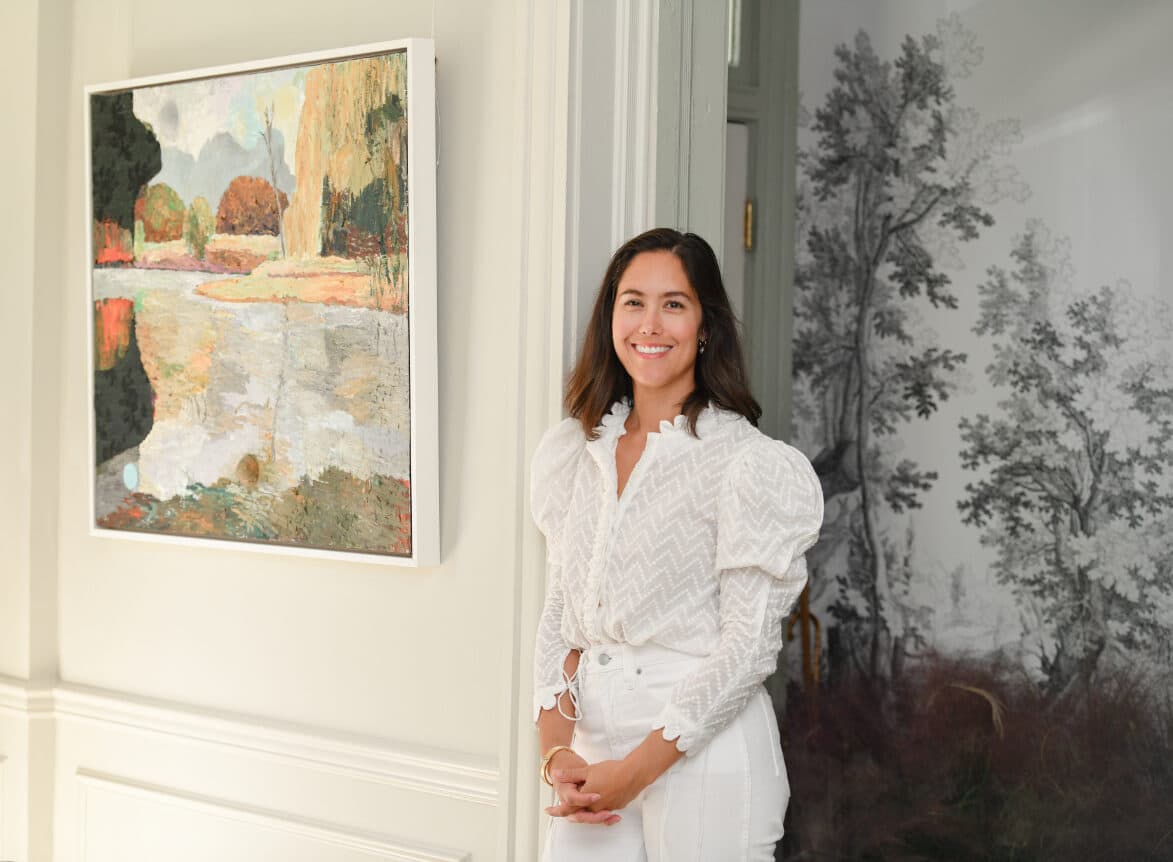Jocelyn Hobbie’s vibrant paintings explode off the canvas in a riot of pattern and color, the remote, enigmatic female subjects at their centers glimpsed at a remove. It’s as if the swirling motifs of lush florals and sharp Technicolor geometrics in which they are dressed are a stand-in for rich inner lives that we cannot—or are not allowed to—see. Which is precisely the point, says the artist. “The figure is the infrastructure of the painting—a place for the patterns to grow from and develop,” Hobbie explains. The unexpected frisson between cool and aloof sitter and rapturous, ecstatic surroundings creates something seductive: “I’m trying to harness a sense of delight and pleasure,” she adds.
Hobbie cites a wide-ranging batch of influences, from her mother’s garden to her grandmother’s quilting to brightly colored Japanese ukiyo-e prints to the court paintings of Hans Holbein, whose portraits captured the studied hauteur of Henry VIII and inscrutable pathos of his ill-fated third wife Jane Seymour in all their pomp and splendor. Her combination of an almost photo-real depiction of faces with an intentional two-dimensional flatness—no foreshortening trickery here—is another surprising contradiction that somehow leaves space for the viewer to do all kinds of joyful guesswork. “It’s just how these women emerge from me,” she says. “The visuality is the end in itself.”
-
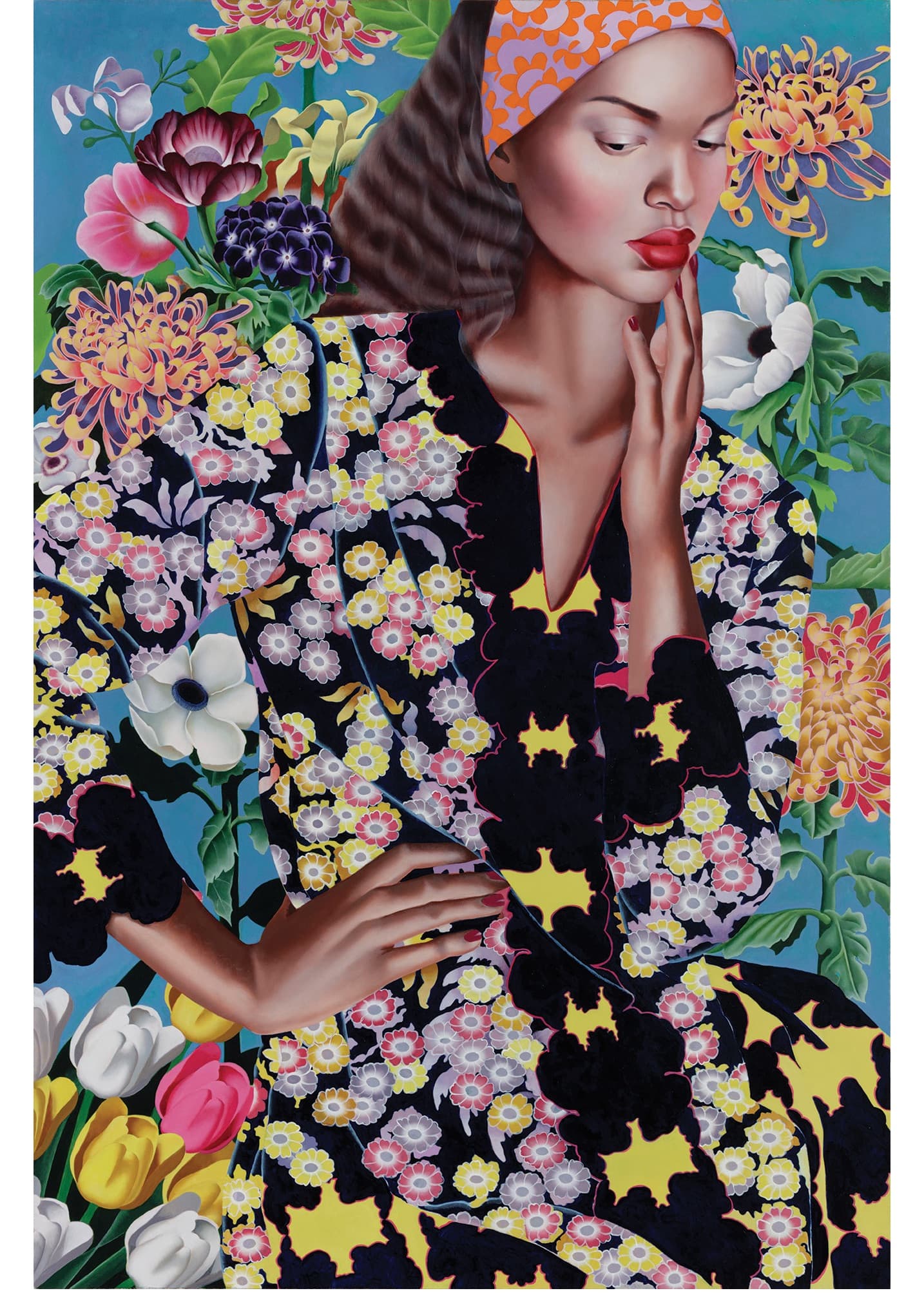
Repeating motifs create an emotive complexity and sense of movement on the surface of the canvas. Polka Dot Swoon (2022), oil on canvas.
Courtesy of the artist and GNYP Gallery, Berlin/Antwerp -
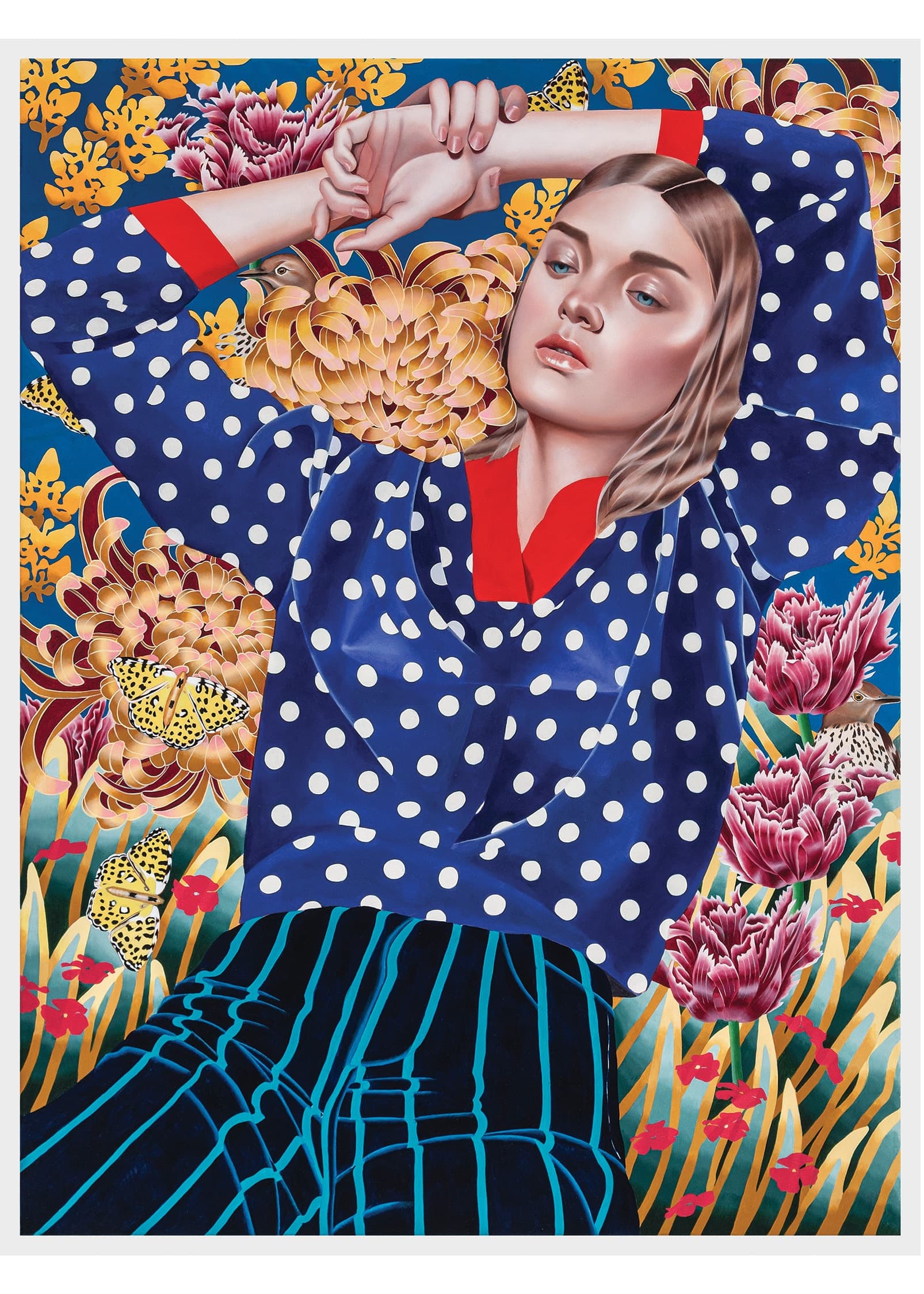
One source of inspiration comes from Edo-era Japanese ukiyo-e prints, with their sharply delineated, brightly-tinted courtesans and landscapes. Kit (Ladders & Streams) (2021), oil on canvas.
Ludger Paffrath / Courtesy of Fredericks & Freiser Gallery, New York
THIS ARTICLE ORIGINALLY APPEARED IN VOLUME 9 OF FREDERIC MAGAZINE. CLICK HERE TO SUBSCRIBE!
